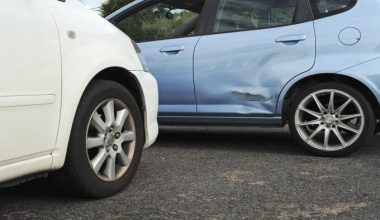You will most certainly pay a higher car insurance rate if you are classified as a high-risk driver. The level of risk you present to an auto insurance company determines your car insurance quote. In general, the more likely you are to file a claim, the higher the cost of the coverage. Businessyield’s insurance editorial team researched numerous aspects of car insurance for high-risk drivers to assist you in navigating your coverage options. From our comparison, high-risk drivers will be able to choose the cheapest car insurance companies that suit their needs. Read on…
What is High-risk Car Insurance?
High-risk auto insurance is simply an auto insurance policy issued for a driver who is thought to be more likely to file a claim. The higher your chances of submitting a claim, the more a car insurance company will charge you for coverage. Higher prices assist insurance firms in compensating for the high risk that these drivers offer.
Which Companies Offer the Best Car Insurance for High-risk Drivers?
It is challenging to find the best high-risk car insurance company for drivers. Even most insurance companies refuse to insure high-risk drivers. Others nearly treble their premium prices. As a result, finding an affordable and dependable insurance provider that meets our needs becomes tough.
It is crucial to remember, however, that not all insurance companies treat high-risk drivers the same way. Some are far too punitive, with harsher rate penalties. Some are liberal, especially when it comes to first-time punishments.
As a result, it is usually a good idea to compare different high-risk insurers before purchasing an insurance policy. The following are the best car insurance providers for high-risk drivers:
- GEICO
- Progressive
- 21st Century
- West Bristol
- Auto Security
- Kemper
- Acceptance
- Dairyland
- GAINSCO
- Infinity Protection Insurance
- Auto Insurance Direct
- National General Insurance Company
- The General Insurance Policy
What Factors Do Insurance Companies Consider For High-risk Drivers?
When an insurance company calculates your auto insurance premium, they consider both driving and non-driving elements to decide how much risk you offer.
First and foremost, insurers will consider the number of violations or citations you’ve got. Let’s look at some of the most common violations and how they might affect your driving record, insurance rate, and whether or not you’re considered a high-risk driver in the eyes of an insurance company.
#1. At-Fault Accidents
As a driver, an at-fault accident, particularly one with a bodily injury payout, can be a significant indicator of insurance risk. It’s not only a financial burden for the insurance company, which is liable for losses through liability coverage, but it’s also an ongoing risk buildup as the firm insures you in the future. An at-fault car accident raises auto insurance premiums by $845 on average per year.
Most jurisdictions will raise your car insurance rates for three years after an at-fault accident. After an at-fault accident, the cheapest insurance plans for high-risk drivers are offered by USAA, State Farm, and Nationwide.
| Company | Avg. Annual Premium | Avg. Monthly Premium |
| USAA | $1,927 | $161 |
| State Farm | $2,005 | $167 |
| Nationwide | $2,334 | $194 |
| GEICO | $2,344 | $195 |
| Farmers | $2,508 | $209 |
| Progressive | $2,936 | $245 |
| Allstate | $3,482 | $290 |
#2. Speeding Tickets
After a ticket, your insurance prices should rise by $431 per year on average. The insurance repercussions of a traffic ticket vary depending on the severity of the offense. Less serious offenses, including speeding, have a smaller influence on insurance prices. But don’t be fooled: speeding tickets are viewed as a prelude to more serious occurrences, which result in higher insurance rates.
You can be penalized for a ticket for three to five years after receiving it, just like an at-fault collision. High-risk drivers with speeding fines can get the cheapest insurance rates from USAA, State Farm, and GEICO.
| Company | Avg. Annual Premium | Avg. Monthly Premium |
| USAA | $1,635 | $136 |
| State Farm | $1,872 | $156 |
| GEICO | $1,906 | $159 |
| Nationwide | $1,943 | $162 |
| Farmers | $2,339 | $195 |
| Progressive | $2,390 | $199 |
| Allstate | $2,767 | $231 |
#3. Reckless Driving
After a reckless driving charge, insurance rates jump by an average of $1,428 per year, amounting to more than $4,000 in additional premiums over the duration of the three-year charge period. In many places, reckless driving is defined as driving dangerously and carelessly, with the potential to cause personal harm and/or property damage, and is regarded as a significant moving offense. The sixth most expensive penalty that affects car insurance is reckless driving.
The average annual premium following a reckless driving charge is $3,187. After a reckless driving charge, the cheapest rates are provided by USAA, State Farm, and Progressive.
| Company | Avg. Annual Premium | Avg. Monthly Premium |
| USAA | $1,958 | $163 |
| State Farm | $2,584 | $215 |
| Progressive | $2,725 | $227 |
| GEICO | $2,727 | $227 |
| Farmers | $2,807 | $234 |
| Nationwide | $3,114 | $259 |
| Allstate | $3,413 | $284 |
#4. Racing
Because of the perils of racing, this penalty carries some highly expensive insurance penalties and is the second-most expensive infraction that affects car insurance prices. High-risk drivers convicted of a racing infraction faced an additional $1,500 in car insurance costs each year. Drive carefully and avoid racing on public highways!
In our survey of leading insurance providers following a racing citation, we observed that drivers cited for racing insurance paid $1,218 per six-month policy. The cheapest insurance for high-risk racing drivers is provided by USAA, State Farm, and GEICO.
| Company | Avg. Annual Premium | Avg. Monthly Premium |
| USAA | $2,448 | $204 |
| State Farm | $2,624 | $219 |
| GEICO | $2,774 | $231 |
| Farmers | $2,823 | $235 |
| Progressive | $2,856 | $238 |
| Nationwide | $3,215 | $268 |
| Allstate | $3,469 | $289 |
#5. DUI
After being charged with a DUI, your annual premium will rise by an average of $1,681. This equates to an additional premium of $140 per month, making DUIs the second most significant violation affecting your cost. DUIs cause the most property damage, bodily harm, and death benefit payouts of any citation. If you’re charged with a DUI or DWI, anticipate your rate to climb by roughly 96% regardless of where you live – not to mention any other fees or legal repercussions.
If you’ve been charged with a DUI, Progressive, USAA, and Farmers may be your cheapest insurance providers.
What Non-driving Factors Contribute To You Being a High-risk Driver?
While violations and accidents might result in higher premiums, a variety of personal characteristics can also have an impact on car insurance costs.
#1. Bad Credit
Your credit score is a representation of the type of driver you will be to an insurance provider. According to FTC studies, drivers with low credit ratings are more likely to file a claim than drivers with stronger credit, and when they do file claims, they result in higher payouts. When there is more risk involved, your insurance provider will charge a higher premium to protect itself.
For drivers with bad or no credit, Nationwide, GEICO, and USAA will most likely offer the cheapest insurance for high-risk.
If you think that using your credit score to decide your insurance rate is unjust, you’re not alone; some jurisdictions consider credit score car insurance profiling to be a form of discrimination.
| Credit Tier | Avg. Annual Premium | Avg. Monthly Premium |
| Poor | $3,147 | $262 |
| Below Fair | $2,461 | $205 |
| Good | $1,760 | $147 |
| Very Good | $1,627 | $136 |
| Excellent | $1,506 | $125 |
#2. Age
When it comes to driving, youth translates to inexperience behind the wheel of a motor vehicle – to put it simply, a youthful driver is more of a risk. Teenage drivers are considered high-risk by car insurance companies due to their lack of driving experience, which correlates to an increased possibility of submitting a claim.
Drivers in their twenties should shop around for the cheapest average rates at USAA, GEICO, and Nationwide.
Cheapest Insurance Companies For High-risk 20-Year-Old Drivers
| Company | Avg. Annual Premium | Avg. Monthly Premium |
| USAA | $1,767 | $147 |
| GEICO | $1,926 | $160 |
| Nationwide | $2,034 | $170 |
| State Farm | $2,211 | $184 |
| Farmers | $2,336 | $195 |
| Progressive | $2,521 | $210 |
| Allstate | $3,265 | $272 |
#3. Location
Your location influences car insurance costs because insurance is charged by ZIP code and controlled by your state. Living in a state with stringent insurance requirements, such as Michigan or other no-fault states, might have an effect on your premium regardless of your driving record.
#4. Insurance Coverage History
Insurance companies view gaps or interruptions in auto insurance coverage as red flags. Drivers who have a continuous history of carrying car insurance with high coverage levels are perceived to be more financially responsible than drivers who have coverage lapses.
According to the research, a driver who has the same current coverage but no insurance history pays more than $190 more for car insurance than a driver who has five years of insurance history. Your insurer will reward you with a lower rate if they regard you as financially prudent. Certain insurers will not even write a policy for a driver who has not had continuous coverage for the previous six months.
| Insurance History | Avg. Annual Premium | Avg. Monthly Premium |
| None | $1,934 | $161 |
| 6 Months with 50-100 BI Limit | $1,805 | $150 |
| 1 Year with 50-100 BI Limit | $1,794 | $149 |
| 3 Years with 50-100 BI Limit | $1,760 | $147 |
| 5 Years with 50-100 BI Limit | $1,742 | $145 |
#5. Vehicle Use
Even if you don’t consider yourself a high-risk driver, the manner you drive can have an impact on your insurance costs. If you use your vehicle for ridesharing or commercial purposes, your insurance company may deny coverage outright due to the risk. The premium increase is justified if you use your vehicle in high-density areas and drive more miles. As more people become rideshare drivers, it’s critical to ensure that your auto insurance policy is adequate for the added risk.
| Use of Vehicle | Avg. Annual Premium | Avg. Monthly Premium |
| Farm | $1,660 | $138 |
| Pleasure | $1,760 | $147 |
| Work – One-way commute (less than 10 miles) | $1,778 | $148 |
| Work – One-way commute (10-15 miles) | $1,784 | $149 |
| Work – One-way commute (15+ miles) | $1,799 | $150 |
| Business | $2,012 | $168 |
#5. Type of vehicle
Car insurance costs will also differ depending on the type of vehicle. Insurance companies view owning a high-performance vehicle as an increased risk. Vehicles capable of off-roading or reaching high speeds, as well as those with costly parts, are viewed as dangerous investments by an auto insurance companies. This could result in a greater premium for a driver of these types of automobiles.
| Vehicle Type | Avg. Annual Premium | Avg. Monthly Premium |
| Sedan | $2,258 | $188 |
| Truck | $1,698 | $142 |
| SUV | $1,918 | $160 |
| Van | $1,616 | $135 |
| Luxury | $2,116 | $176 |
| Hybrid/green | $2,224 | $185 |
#6. License Points
Many states utilize “points” systems to score traffic offenses; each violation is assigned a certain number of points that remain on your record for a period of time depending on your state and the severity of the offense; if you accumulate a certain amount of points, you may lose your license.
Your auto insurance company, on the other hand, does not cite points directly — they use your Motor Vehicle Report (MVR) to see the information that comprises your points total. Your MVR will provide a comprehensive list of any tickets you have been issued, as well as any traffic collisions. Although points on your driver’s license can reflect a high premium, they do not directly lead to higher premiums.
How Can I Locate High-risk Auto Insurance?
The first step in locating a fair rate for a driver with a poor driving record is to obtain many internet quotations from various insurers and compare rates to determine the best plan.
You won’t know which carrier will be able to give you the lowest premium until you get your quotations, and there are additional steps you can take to lower your rate. With a few exceptions, proactive activities like the following may help improve your risk profile:
- Work to raise your credit score.
- As a student, make good grades.
- After a violation, enroll in driving classes.
Remember that your insurance company will require confirmation of these precautions, so keep detailed records and present them to the carrier when you’re ready.
Who is a High-risk Driver?
A high-risk driver is someone who insurers believe is more likely than a typical driver to file a claim or be involved in a crash. There is no hard and fast rule for who is or isn’t high-risk, but if you’re young, have multiple serious driving infractions on your record, or have let your insurance lapse, you’re probably in the high-risk category.
How Much Does High-risk Insurance Cost?
The amount you’ll pay as a high-risk driver can vary depending on what makes you high-risk, how long ago the incident occurred, and where you live; Being high-risk can raise your rates by as little as 4% or as much as 165%.
How Much Is High-Risk Insurance?
What exactly makes you a high-risk driver, how long ago the incident occurred, and where you reside all play a role in determining how much of a premium increase you may expect to pay as a result of being classified as such. Being considered a high-risk customer can result in a rise in your rates of anywhere from 4% to 165%.
What Is the Best Insurance for High-Risk Drivers?
Geico has excellent rates for high-risk drivers, but drivers who have very low-risk profiles might do better with a nonstandard insurer like The General or Safe Auto. Geico offers outstanding rates for high-risk drivers. You also have the option of purchasing coverage through the high-risk pool offered by your state.
What Does High-Risk Mean for Car Insurance?
When it comes to auto insurance, being considered a high-risk applicant means that you have a greater likelihood of filing a claim than other drivers do. Some of the things that can put an application in the high-risk category include having a poor driving record, being under the age of 25, residing in an area with high rates of theft and vandalism, and having a poor credit history.
What Makes Someone Uninsurable for Car Insurance?
If a potential customer has a recent history of accidents, a string of minor traffic tickets or a significant transgression such as a DUI, insurance companies will frequently refuse to provide coverage to that individual. These are strong indications of a dangerous driver who is likely to cause a car accident and file a claim for compensation after the incident.
What Happens if I Can’t Find an Insurance Quote?
If you are having trouble finding insurance, you should get in touch with the insurance department of your state and inquire about a state-assigned risk pool. These pools make it easier for consumers to obtain insurance, even if it comes at a higher cost.
How Long Does Your Driving Record Affect Your Auto Insurance?
One’s vehicle insurance rates will be affected for the rest of their life by their driving history. When deciding whether or not to insure a person, insurance companies will always look at that individual’s driving record. Negative information on a driver’s license does not be there forever.
For example, a speeding penalty will be on your driving record for three years and six months. Contrarily, a conviction for driving under the influence stays on your record for anywhere from three to five years. As long as these marks remain on a driver’s record, insurance premiums for high-risk drivers will be higher. The effect, however, wanes over time.
How Many Accidents Before You Lose Your Insurance?
An insurance policy is not often terminated by the insurance company during the coverage period. That holds true regardless of how often an individual sustains injuries. The motorist’s insurance company may instead choose not to renew the policy if the driver has caused several accidents while under the influence of alcohol or drugs.
There is no fixed threshold beyond which this measure must be taken. What kind of incidents and what kind of insurance company you have will determine your premiums. Minor collisions are less likely to result in a driver’s insurance company refusing to renew coverage than more severe accidents.
Nevertheless, insurance companies rarely refuse to renew policies but rather increase rates instead. In that case, it’s a good idea to look around for cheaper insurance options.
Insurance for High-Risk Drivers FAQs
Who are the most high risk drivers?
According to research, young drivers are more prone than older drivers to have accidents or commit traffic offenses. Their risk level is frequently exacerbated by their age. Older drivers, like teen drivers, are at a larger risk while driving.
Why would someone choose to pay more each month for auto insurance?
Most people budget their money on a monthly basis, as it allows one to stretch the cost of the premium out over time. Because most people have a fairly consistent monthly income, it is simple to set aside the premium to be paid together with their other monthly obligations.
Do high risk vehicles have high insurance premiums?
Because they are more prone to make claims, high-risk drivers pose a bigger risk to insurers. They typically face higher premiums and may be denied coverage. Reduce your premiums by shopping around and attempting to reduce your risk.
Related Articles
- INTERNET SECURITY FOR BUSINESS: BEST OPTIONS & REVIEWS IN 2023
- Short Term Car Insurance: Best Insurers in the US
- LANDLORD INSURANCE: Coverages, And Costs
- Merchant Account: Best UK Practices, How to Apply Guide & All You Need
- Best Insurance For New and Young Drivers: Coverages & Policies






